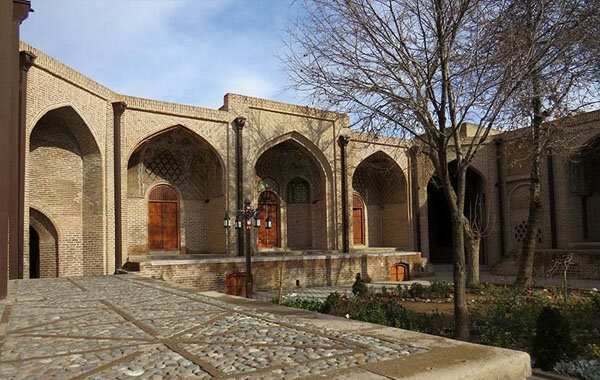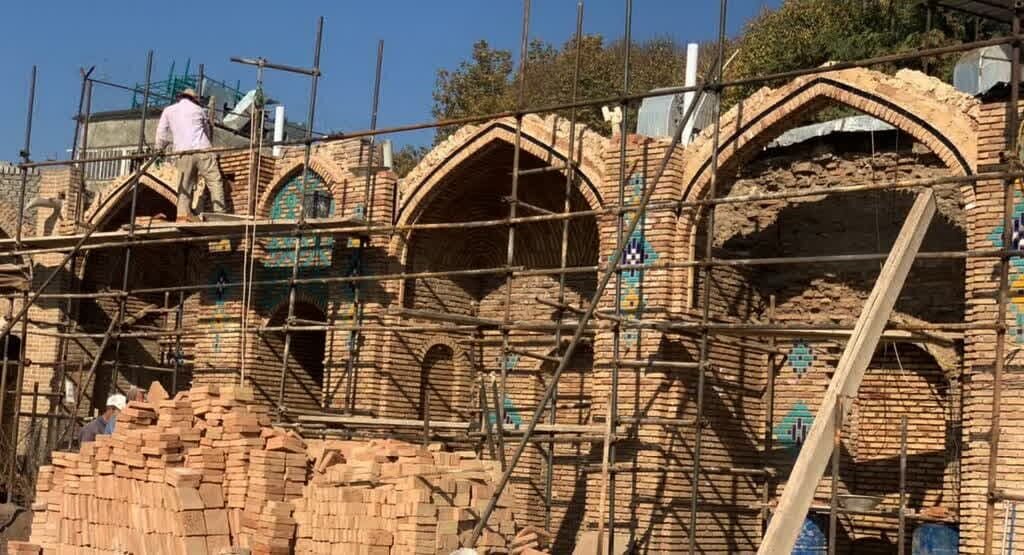Sa’d al-Saltaneh: UNESCO-listed caravanserai still under restoration

TEHRAN - The second phase of a restoration project on the centuries-old Sa’d al-Saltaneh Caravanserai in Qazvin has officially begun, according to the province’s tourism chief.
Alireza Khazaeli on Monday announced that the project is being carried out in collaboration with the private owner of the caravanserai.
Khazaeli explained that the restoration project, approved by the technical council of the provincial tourism directorate last winter, aims to transform the caravanserai into a traditional hotel.
Sa’d al-Saltaneh is one of the 54th Iranian caravanserais collectively hold a UNESCO World Heritage status.
The first phase of the restoration focused on the northern and northwestern sections of the structure. The current phase includes debris removal, structural reinforcement, and reconstruction of the building’s main framework and roof, particularly in the northwestern area, the official explained.
“As part of the restoration, experts are also removing damaged and outdated additions to the caravanserai, rebuilding the core structure, and recreating the original architectural details and decorative elements.”
The ongoing project seeks to preserve its cultural value while adapting it for modern use, blending the historical charm of the caravanserai with the amenities of a contemporary traditional hotel.

The restoration is being closely supervised by cultural heritage specialists to ensure the integrity of the site is maintained, Khazaeli underlined.
The Sa’d al-Saltaneh Caravanserai is recognized for its architectural and historical significance. It is one of the largest urban caravanserais in the country, and stands as a symbol of Qazvin’s rich history and its importance as a trade hub during the Qajar era.
It is flanked by a beautifully restored Qajar-era bazaar of the same name in Qazvin, which was once the capital of the mighty Persian Empire, under the Safavids, from 1548 to 98.
Caravanserai or caravansary is a compound word combining “caravan” with “sara”; the former stands for a group of travelers and the latter means the building. They often had massive portals supported by elevated load-bearing walls. Guest rooms were constructed around the courtyard and stables behind them, with doors in the corners of the yard.
For centuries, caravanserais constituted key parts of a rich circuit of travel and trade by providing shelter, food, and water for caravans, pilgrims, and other trekkers. For many travelers, staying in or even visiting a centuries-old caravanserai can be a broad experience; they have an opportunity to feel the past, a time travel back to a forgotten age.
The earliest caravanserais in Iran were built during the Achaemenid era (550 - 330 BC). Centuries later, when Shah Abbas I assumed power from 1588 to 1629, he ordered the construction of a network of caravanserais across the country. Such roadside inns were once constructed along ancient caravan routes in the Muslim world to shelter people, their goods, and animals. The former Silk Road may be the most famous example, dotted with caravanserais.
Last September, a selection of 54 roadside inns won a UNESCO label under the name: The Persian Caravanserai. The shortlist, however, is only a small percentage of the numerous caravanserais built along the ancient roads of Iran.
AM
Leave a Comment